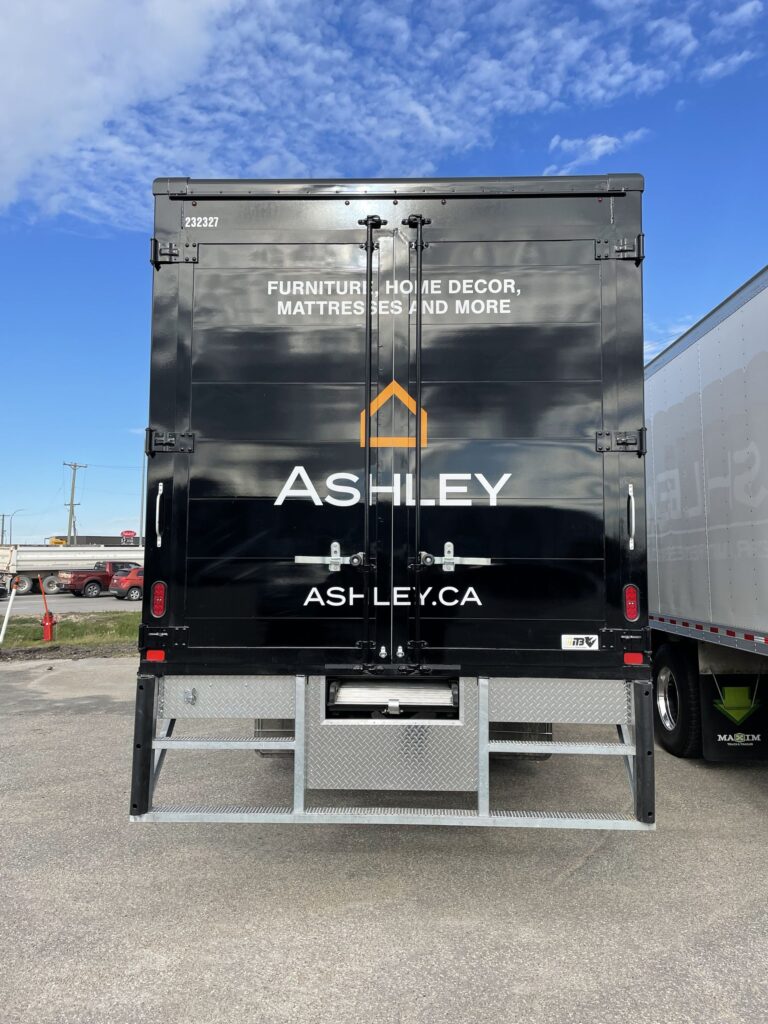90s Chevy Trucks For Sale: A Comprehensive Buyer’s Guide
90s Chevy Trucks For Sale: A Comprehensive Buyer’s Guide cars.truckstrend.com
Introduction: The Enduring Allure of a Classic Era
The 1990s were a golden age for American trucks, and Chevrolet stood at the forefront of this automotive revolution. From the rugged C/K series to the versatile Tahoe and Suburban, 90s Chevy trucks defined a generation with their blend of utility, style, and reliability. Today, these vehicles are experiencing a massive resurgence in popularity, becoming highly sought-after for a variety of reasons. Whether you’re a first-time truck buyer, a seasoned enthusiast looking for a project, or someone yearning for a slice of automotive nostalgia, "90s Chevy Trucks For Sale" represents an exciting and accessible segment of the classic vehicle market.
90s Chevy Trucks For Sale: A Comprehensive Buyer’s Guide
This comprehensive guide will delve into what makes these trucks so special, what to look for when buying one, the benefits of ownership, and how to navigate the current market to find your perfect 90s Chevy. We’ll explore their iconic design, robust mechanicals, and the vibrant community that keeps them alive and thriving.
The Enduring Appeal of 90s Chevy Trucks
Why are trucks from the 1990s, particularly those bearing the Chevrolet bowtie, still so coveted? The answer lies in a confluence of factors that perfectly align with modern desires for simplicity, durability, and classic aesthetics.
Foremost is nostalgia. For many, these trucks represent a simpler time, evoking memories of family road trips, weekend adventures, or working alongside a trusty pickup. Their design, often referred to as the "OBS" (Old Body Style) for the GMT400 platform, strikes a perfect balance between the boxy, utilitarian lines of the 70s and 80s and the more aerodynamic shapes of the 2000s. The GMT400 trucks, introduced in 1988 for the 1988 model year (and continuing through 1998 for pickups, 1999-2000 for SUVs), were a revolutionary design, blending a more car-like interior with traditional truck ruggedness.
Beyond sentimentality, mechanical simplicity and reliability are huge draws. Unlike modern trucks laden with complex electronics and intricate emissions systems, 90s Chevys feature relatively straightforward powertrains and fewer sensors to fail. This makes them easier and often cheaper to maintain and repair, appealing to DIY enthusiasts and those who prefer less dependency on dealership service departments.
Furthermore, these trucks offer exceptional versatility and functionality. They were built as workhorses, capable of towing, hauling, and enduring harsh conditions. This inherent durability means many examples still have plenty of life left, whether as a daily driver, a weekend project, or a dedicated utility vehicle.
Finally, the strong aftermarket support is a significant advantage. The sheer volume of these trucks produced means that parts, both OEM and aftermarket, are readily available and generally affordable. From engine components and suspension upgrades to interior trim and body panels, you can find almost anything you need to restore, customize, or maintain your 90s Chevy.
Key Models and Their Characteristics

The 1990s Chevy truck lineup was diverse, offering something for every need. Understanding the key models and their variations is crucial for any potential buyer.
The C/K Series (GMT400 Platform): This is the quintessential 90s Chevy pickup.
- Designation: ‘C’ denotes 2-wheel drive, and ‘K’ denotes 4-wheel drive.
- Payload Ratings:

- 1500 Series: Light-duty half-ton trucks, most common for daily driving and light hauling.
- 2500 Series: Three-quarter-ton trucks, offering increased payload and towing capacity. Available in light-duty (7,200 lbs GVWR) and heavy-duty (8,600 lbs GVWR) versions.
- 3500 Series: One-ton trucks, designed for heavy-duty work, often with dual rear wheels (duallies) for maximum towing and payload.
- Body Styles:
- Regular Cab: Two doors, single row of seating. Available with short (6.5 ft) or long (8 ft) beds.
- Extended Cab: Two front doors and smaller rear "suicide" doors (introduced later in the 90s), offering limited rear seating. Typically paired with a short bed.
- Crew Cab: Four full-size doors, ample rear seating. Primarily available on 2500HD and 3500 models, usually with an 8 ft bed.
- Engine Options: A robust lineup of gasoline and diesel engines.
- 4.3L V6: Standard in many 1500 models, offering decent fuel economy for a truck.
- 5.0L (305 cu in) V8: A common small-block V8, offering a good balance of power and efficiency.
- 5.7L (350 cu in) V8: The legendary small-block, known for its reliability, power, and vast aftermarket support. This is arguably the most desirable gas engine.
- 7.4L (454 cu in) V8: The big-block option, primarily found in 2500HD and 3500 models, built for serious towing and hauling.
- 6.5L Turbo Diesel: A strong, albeit sometimes problematic, diesel option offering excellent torque and fuel economy for its time.
- Transmission Options:
- Manual: NV3500 (light-duty) and NV4500 (heavy-duty), both known for durability.
- Automatic: 4L60E (light-duty, common in 1500s) and 4L80E (heavy-duty, common in 2500s/3500s). The 4L60E can be a weak point if not properly maintained, while the 4L80E is extremely robust.
- Trim Levels:
- Work Truck (WT): Basic, no-frills, durable vinyl interior.
- Cheyenne: Mid-range, offering more comfort features.
- Silverado: Top-tier trim with power windows/locks, upgraded interior, and chrome accents.

SUVs Based on the GMT400 Platform:
- Tahoe/Yukon: Introduced in 1992 (as the Blazer/Jimmy 2-door, renamed Tahoe/Yukon in 1995), these SUVs offered the ruggedness of the C/K trucks with an enclosed passenger area. Available in 2-door and 4-door configurations, making them popular for families and off-roaders.
- Suburban/Yukon XL: The long-wheelbase SUV, offering maximum passenger and cargo capacity, making it the ultimate family hauler or tow vehicle of its era.
What to Look For When Buying a 90s Chevy Truck
A thorough inspection is paramount when considering a 90s Chevy. While these trucks are durable, time and neglect can take their toll.
- Rust: This is the primary enemy. Check:
- Rocker Panels & Cab Corners: Common areas for rust to form due to road salt and moisture.
- Wheel Arches & Fenders: Especially around the lips and where mud collects.
- Bed Supports & Frame: Get underneath the truck and inspect the frame rails for significant corrosion, cracks, or repairs. Pay close attention to crossmembers and suspension mounting points.
- Brake Lines & Fuel Lines: Rust can compromise these critical components.
- Engine Health:
- Leaks: Look for oil, coolant, or power steering fluid leaks.
- Smoke: Blue smoke (burning oil), white smoke (burning coolant), or black smoke (rich fuel mixture) from the exhaust.
- Noises: Listen for knocking, ticking, or excessive valvetrain noise.
- Cold Start: How does it start when cold? Does it idle smoothly?
- Maintenance Records: Ask for service history if available.
- Transmission:
- Shifting: During a test drive, ensure shifts are smooth and timely, without harsh jerks or slipping.
- Fluid: Check the transmission fluid on a warm engine while running. It should be red or pink, not brown or burnt-smelling.
- 4L60E Specifics: These are known to be weaker than the 4L80E. Look for signs of previous rebuilds or upgrades if you plan on heavy use.
- Suspension and Steering:
- Worn Components: Check for worn ball joints, tie rods, control arm bushings, and shock absorbers. Excessive play in the steering wheel is a sign of worn steering components.
- Ride Quality: Does it feel bouncy or does it wander on the road?
- Brakes:
- Pedal Feel: Should be firm, not spongy.
- Rotor/Pad Condition: Check for excessive wear.
- ABS Light: A common issue is the ABS module failing, leading to the ABS light staying on.
- Electrical System:
- Lights: Test all interior and exterior lights.
- Power Accessories: Check power windows, locks, mirrors, radio, and HVAC system. Dash gauge functionality is important.
- Battery & Alternator: Ensure the battery holds a charge and the alternator is charging properly.
- Interior Condition:
- Dash Cracks: Very common due to sun exposure.
- Seat Wear: Driver’s seat bolster is often worn or torn.
- Headliner Sag: Another common issue.
- HVAC: Ensure the heater and AC (if equipped) blow hot and cold air respectively. Blend door actuators can fail.
- Aftermarket Modifications:
- Be wary of poorly executed modifications. Lifts, engine swaps, or extensive electrical work can introduce problems. Quality matters.
- Documentation:
- Verify the VIN, check for a clean title, and inquire about service records.
The Benefits of Owning a 90s Chevy Truck
- Reliability and Durability: When properly maintained, these trucks are workhorses that can last for hundreds of thousands of miles.
- Simple Mechanics: Easier to diagnose and repair for the average enthusiast, reducing labor costs.
- Affordability: Initial purchase prices are generally lower than newer trucks, and parts are often inexpensive.
- Strong Aftermarket Support: A massive ecosystem of parts, upgrades, and knowledge ensures you can keep your truck running and customize it to your heart’s content.
- Classic Status and Appreciation: Well-preserved examples are beginning to appreciate in value, making them a potential investment as well as a practical vehicle.
- Versatility: Capable of being a daily driver, a work truck, an off-road rig, a show vehicle, or a comfortable cruiser.
Common Challenges and Solutions
While robust, 90s Chevy trucks do have some common quirks:
- Fuel Pump Issues: The in-tank fuel pump is a common failure point. Solution: Replace with a quality aftermarket unit; consider upgrading wiring for longevity.
- ABS Module Failures: The Kelsey-Hayes ABS module is known to fail. Solution: Many owners either remove the module (disabling ABS) or send it off for specialized repair.
- HVAC Blend Door Actuators: Can stick, causing issues with temperature control. Solution: Replacement kits are readily available, though accessing them can be a chore.
- Dash Cracks: Almost universal in sunny climates. Solution: Dash covers are a popular, affordable fix. Full replacement dashboards are also available but more costly.
- Rust: Especially in northern climates. Solution: Proactive rust prevention (undercoating, regular washing) is key. If buying, aim for a rust-free southern truck if possible, or be prepared for bodywork.
- Worn Suspension Components: Ball joints, tie rods, and bushings wear out over time. Solution: Standard maintenance. Parts are inexpensive and replacement is straightforward for a mechanic.
Tips for a Successful Purchase
- Define Your Needs and Budget: Are you looking for a daily driver, a show truck, or a project? This will significantly influence the condition and price range you should target. Be realistic about what you can afford and the potential for immediate repairs.
- Do Your Research: Understand the different models, engines, and common issues. Join online forums (e.g., GMT400.com, SilveradoSierra.com) to learn from experienced owners.
- Inspect Thoroughly: Never buy sight unseen if possible. If you can’t inspect it yourself, hire a pre-purchase inspection (PPI) from a trusted mechanic familiar with older trucks.
- Test Drive Extensively: Drive at various speeds, on different road surfaces, and test all functions (brakes, steering, lights, HVAC, 4WD).
- Negotiate: Don’t be afraid to haggle, especially if you find issues during your inspection.
- Consider Insurance: Get quotes for insurance, as rates for older vehicles can vary. Some classic car insurance companies offer specialized policies.
- Patience is Key: The perfect truck might not appear overnight. Be patient and don’t rush into a purchase.
Price Table: Representative 90s Chevy Trucks For Sale
Prices for 90s Chevy trucks vary dramatically based on condition, mileage, location, engine/transmission, and specific model/trim. The table below provides representative ranges and factors influencing value.
| Model/Type | Condition (Poor/Fair) | Condition (Good) | Condition (Excellent/Restored) | Key Factors Influencing Price |
|---|---|---|---|---|
| C/K 1500 Regular Cab | $2,000 – $5,000 | $5,000 – $10,000 | $10,000 – $25,000+ | Engine (5.7L premium), 4×4, Rust-free, Low mileage, Manual transmission |
| C/K 1500 Extended Cab | $2,500 – $6,000 | $6,000 – $12,000 | $12,000 – $30,000+ | Rust-free, 4×4, 5.7L V8, Power options, Clean interior |
| C/K 2500/3500 (HD) | $3,000 – $7,000 | $7,000 – $15,000 | $15,000 – $40,000+ | Crew Cab, Dually, 7.4L V8, 6.5L Diesel (running well), 4×4, Tow package |
| Tahoe/Yukon (2-door) | $3,000 – $7,000 | $7,000 – $15,000 | $15,000 – $35,000+ | 4×4, 5.7L V8, Clean interior, Low mileage, Specific colors |
| Tahoe/Yukon (4-door) | $2,500 – $6,000 | $6,000 – $14,000 | $14,000 – $30,000+ | 4×4, 5.7L V8, Leather interior, Sunroof, Rust-free |
| Suburban/Yukon XL | $2,000 – $6,000 | $6,000 – $15,000 | $15,000 – $35,000+ | 4×4, 7.4L V8, Leather, Third-row seating, Tow package, Rust-free |
Note: "Poor/Fair" condition typically means needing significant mechanical and/or cosmetic work. "Good" implies a running, driving vehicle with some wear and tear. "Excellent/Restored" indicates a near-showroom condition, low mileage, or professionally restored vehicle.
Frequently Asked Questions (FAQ)
Q: Are 90s Chevy trucks reliable?
A: Yes, generally very reliable. Their simpler mechanical systems mean fewer complex components to fail compared to modern vehicles. Regular maintenance is key, as with any vehicle.
Q: What are the best engines to look for?
A: For gasoline, the 5.7L (350 cu in) V8 is highly recommended due to its excellent balance of power, reliability, and abundant aftermarket support. The 7.4L (454 cu in) V8 is great for heavy towing. The 6.5L diesel can be good, but research its common issues thoroughly.
Q: Are parts still available for 90s Chevy trucks?
A: Absolutely! Due to their high production numbers, parts are widely available from auto parts stores, online retailers, and salvage yards. Aftermarket support for upgrades and restoration is also extensive.
Q: Do they get good gas mileage?
A: Compared to modern trucks, no. Expect single-digit to low-teens MPG (e.g., 10-15 MPG) depending on the engine, drivetrain (2WD vs. 4WD), and driving style. Diesels offer slightly better economy.
Q: Are they good for towing?
A: Yes, especially the 2500 and 3500 series with the 5.7L or 7.4L V8s, or the 6.5L diesel. They were built for work and can handle significant loads. Always check the specific truck’s Gross Vehicle Weight Rating (GVWR) and Gross Combined Weight Rating (GCWR).
Q: What’s the difference between a C and a K series?
A: ‘C’ denotes a 2-wheel drive (RWD) truck, while ‘K’ denotes a 4-wheel drive truck.
Q: What is a GMT400?
A: GMT400 is the internal General Motors platform code for the full-size pickup trucks (C/K series) and SUVs (Tahoe, Suburban, Yukon) produced from 1988 (for pickups) through 2000 (for some SUVs). It represents a significant design and engineering leap for GM trucks.
Q: Are 90s Chevy trucks appreciating in value?
A: Well-maintained, rust-free, and low-mileage examples, particularly those with desirable configurations (e.g., 4×4, 5.7L, specific trims), are certainly seeing an upward trend in value. They are increasingly viewed as modern classics.
Concluding Summary: A Timeless Workhorse
The market for "90s Chevy Trucks For Sale" is vibrant and dynamic, reflecting the enduring appeal of these iconic vehicles. With their classic good looks, robust engineering, and relative simplicity, they offer a compelling alternative to newer, more complex trucks. Whether you’re seeking a dependable daily driver, a capable workhorse, or a canvas for customization, a 90s Chevy truck delivers character and utility in spades.
By understanding the different models, knowing what to inspect, and being prepared for common challenges, you can confidently navigate the market and find a truck that will provide years of reliable service and enjoyment. These trucks are more than just transportation; they are a piece of American automotive history, ready for their next chapter on the open road.






